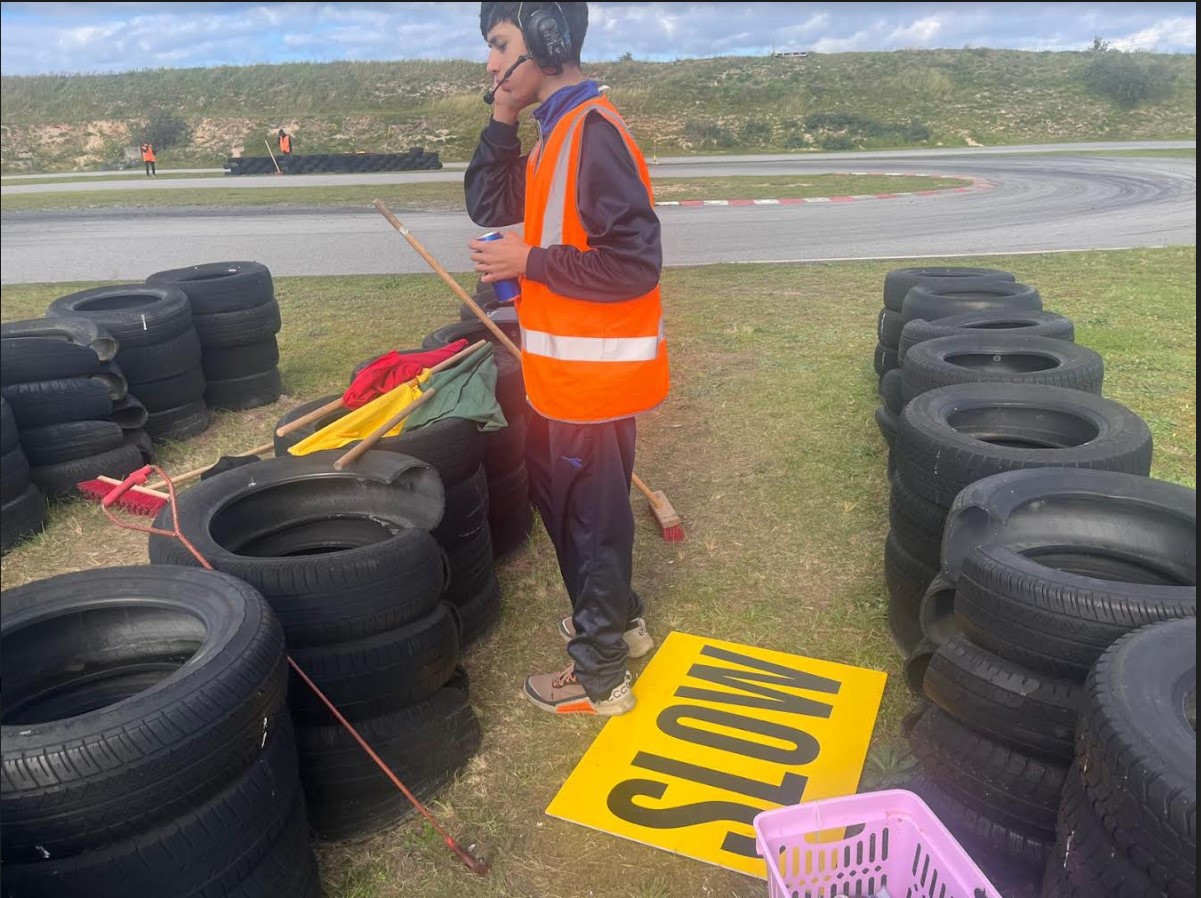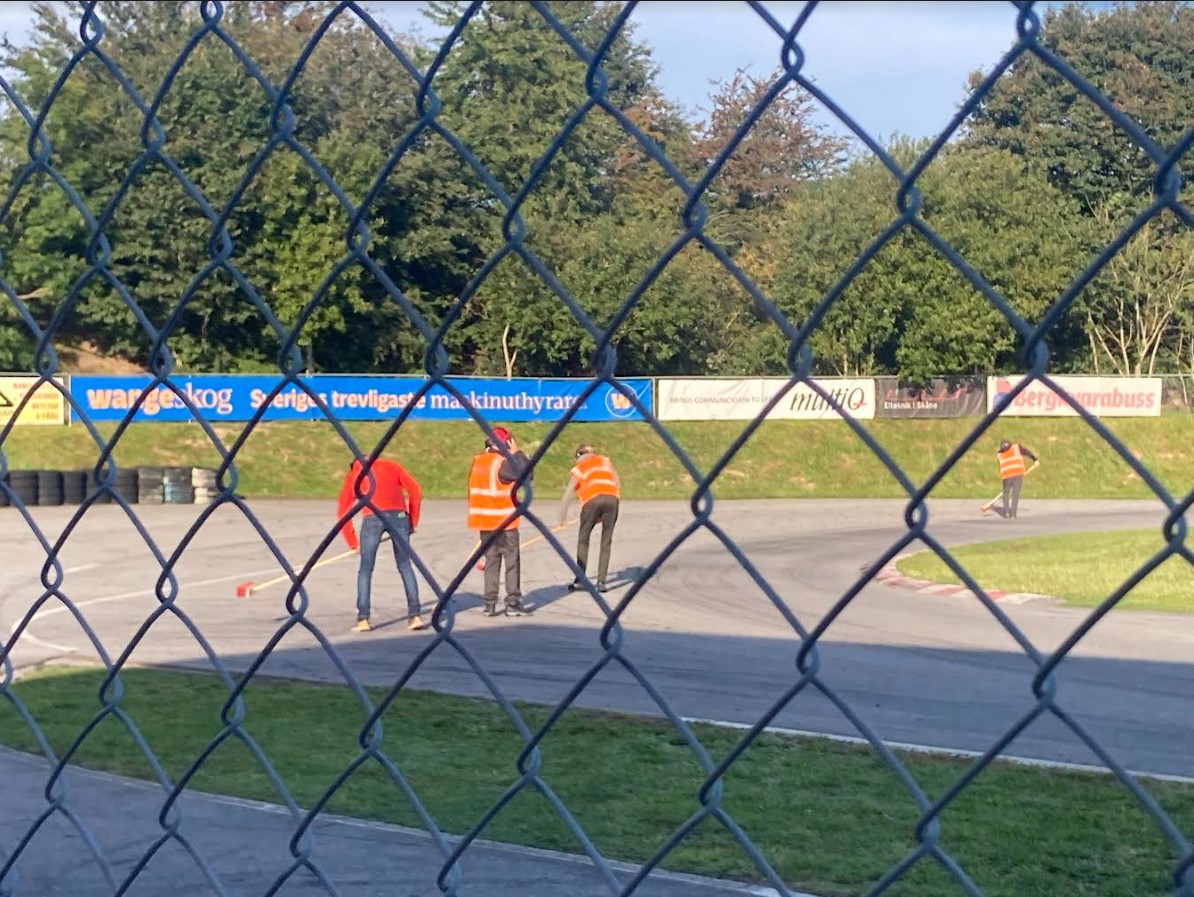
Marshalling at Lockarps SKCC Karting Race
By Nate Dinakaran, Oliver Green, Leone Sabatino, Ryan Epah & Safouh Tawil
During a competitive sport, such as Motorsport, safety is key. As marshals, we are responsible for ensuring the safety of the drivers and spectators. This is done through a variety of different steps, including alarming drivers of incidents ahead of them, looking for dangerous driving, pulling drivers and karts to safety, off the racing track, due to a crash, or injury, as well as generally clearing the track. This is especially important, due to the fact that vehicles, in our case karts, are being driven at speeds much greater than 100 kph.
To fulfil such tasks, marshals have multiple systems and methods in place to do so.
Firstly, flags and radios are used to indicate danger and communicate the on track situation, at a certain part of the track. Each part of the track can be separated in fractions, called sectors. Each sector has multiple flag/marshall stations, which consists of yellow, red, green, blue, and a special set of flags for penalties. During the karting races, we were spread out around different parts of the track, increasing awareness of the marsheling group, to make sure that there was no blind spot for the marsheling group on the track. Each flag represents a different racing scenario, so drivers, organisers, and medics are aware of the on track situation. The yellow flag and double yellow flags, when waved, represent the scenario, in which an incident has occurred on track.
A red flag represents the stoppage of a race, while the green flag represents the resumption, start of a race, or clearance of an obstruction on track. Finally, the blue flag represents that a driver is going to be one lap behind the leaders, and the penalty flags show that a driver is driving dangerously, or has been awarded a penalty.
Secondly, the clearance of the track is key to keep unnecessary crashes and incidents to a minimum. We fulfilled such a task, through crowd control, sweeping the track, and pulling crashed karts, or possibly injured rivers off the track, and into a safe zone, off track. These scenarios took place, on both days of our volunteering, as we had to prevent the crowd from throwing stones, plastics, and miscellaneous objects on track, so the karts being driven would not be hindered, avoiding a mechanical-based accident. On top of this, the younger racers frequently crash, making us lift, drag, and push karts and drivers off the racing track.
In the end, thanks to the work of our group and the other volunteers, we were able to ensure the safety of all the drivers. The races all went as planned, even though there were some delays here and there, thanks to our swift action when it came to removing debris and karts off the track. The weekend of racing was successful as all the races were completed without any major injuries.


You may also like

Creating Study Tips for MYP Students


